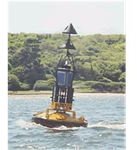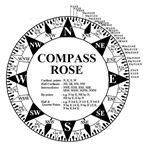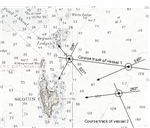Basic Directions
The diameter around which the earth rotates is “The Axis of Rotation”. Where it meets the earth form the Geographic North and South Poles
The direction in which any point on the earth’s surface is carried (because of the earth’s anticlockwise rotation) is called East. The opposite direction is West.
Images
Terms related with the ship
AFT - Toward the stern of the ship
ABAFT - Between abeam and astern.
AHEAD - In a forward direction, ie in the direction of the bow (front) of the ship
ASTERN - In back (stern) of the ship, opposite of ahead.
PORT: The left of the ship, facing the bow OR, a harbour.
STARBOARD: The right side of the ship, facing the bow.
Basic Nautical terms used when sailing

AGROUND - Touching or stuck to the bottom of the seabed.
AIDS TO NAVIGATION Artificial objects to supplement natural landmarks used for navigation. eg buoys, lighthouses etc. (see pic)
ANCHORAGE A place suitable for anchoring in relation to the wind, seas and the sea bottom.
BEARING - The direction of an object relative to the heading of the ship. Measured in degrees.
BUOY - An anchored float used for marking a position on the water, or for mooring. (see pic)
DRAFT - The depth of water a ship draws.
FATHOM - Six feet.
GIVE-WAY VESSEL A term used to describe the vessel which must yield in meeting, crossing, or overtaking situations.
STAND ON VESSEL A term used to describe the vessel which may NOT yield in meeting, crossing, or overtaking situations.
TIDE - The periodic rise and fall of water level in the oceans.
This blog talk about engineers topics, engineering courses and tutorials, engineering jobs: electrical engineering,mechanical engineering,nuclear engineering, petroleum engineering, biomedical engineering, biological engineering,aerospace engineering, industrial engineering, drilling engineering, offshore engineering, reservoir engineering.
adsense
Wednesday, July 25, 2012
Marine Navigation: Understanding basic maritime terminology
Subscribe to:
Post Comments (Atom)




No comments:
Post a Comment